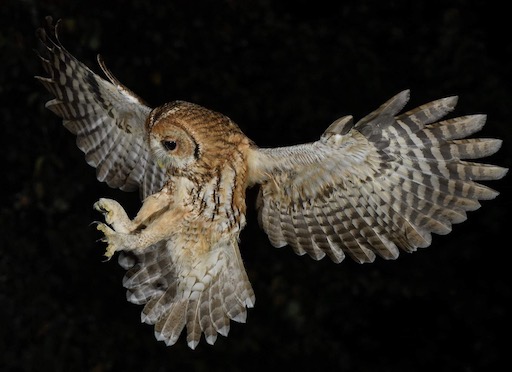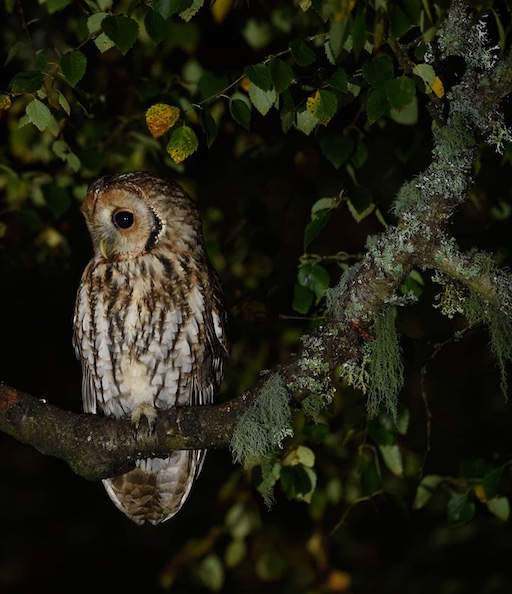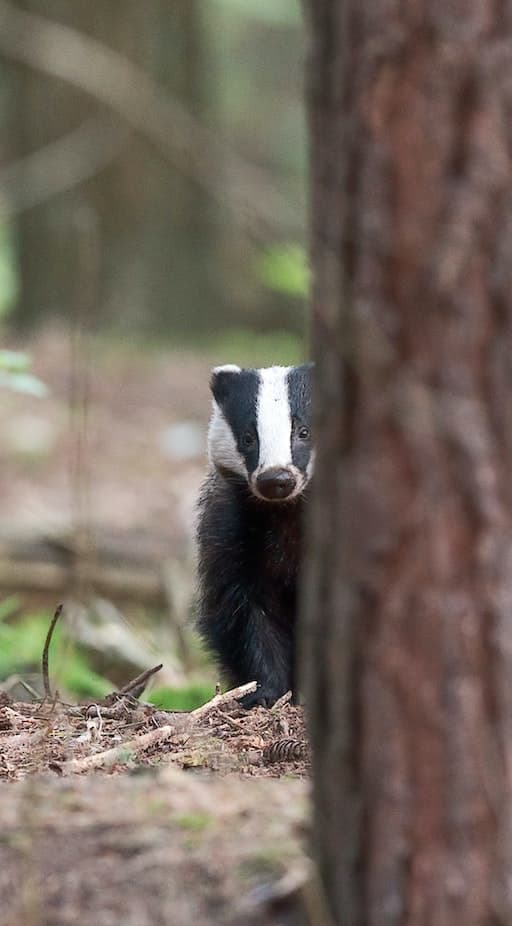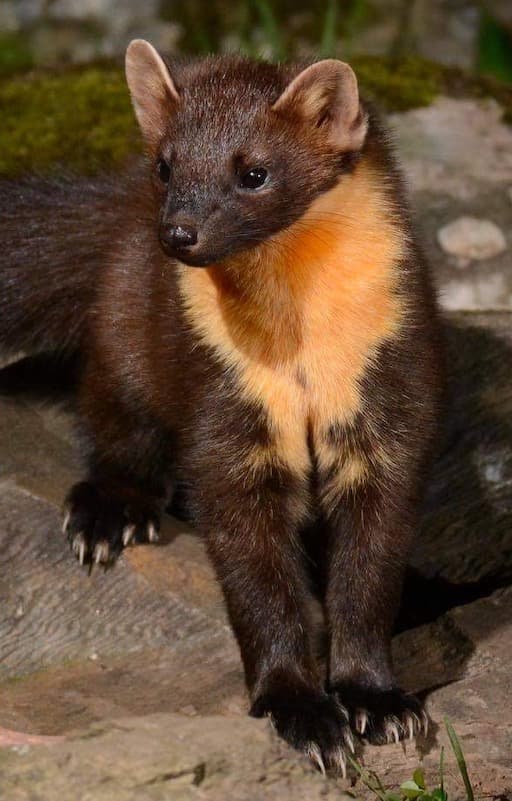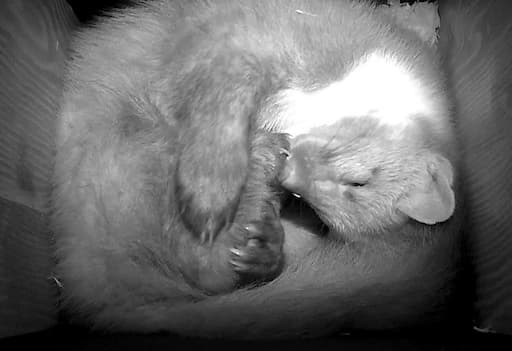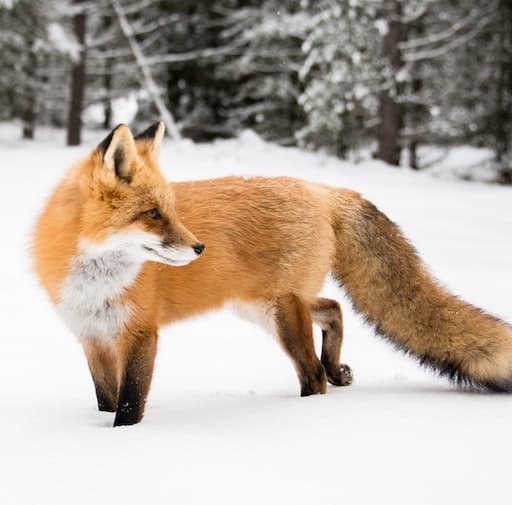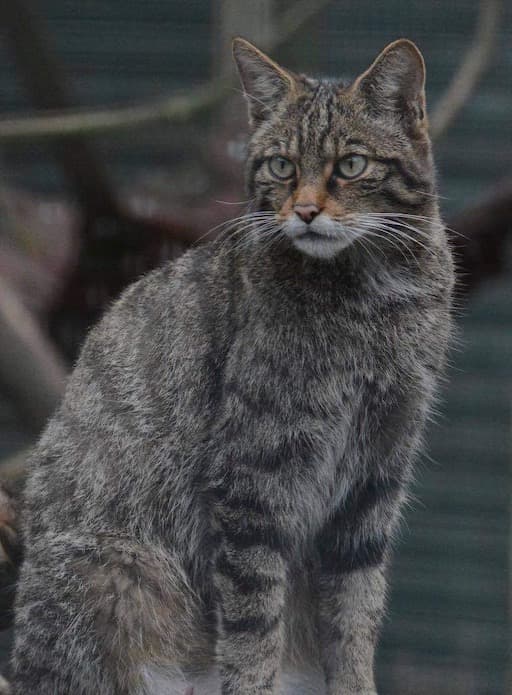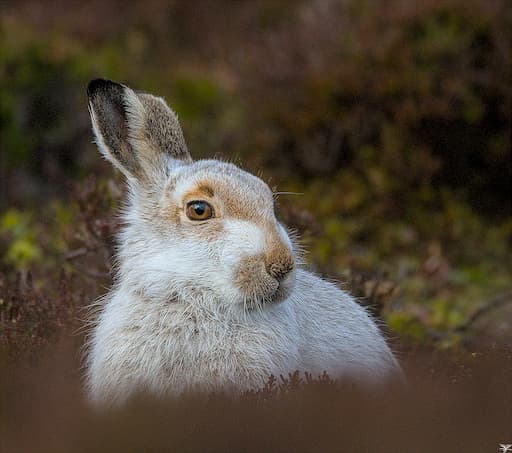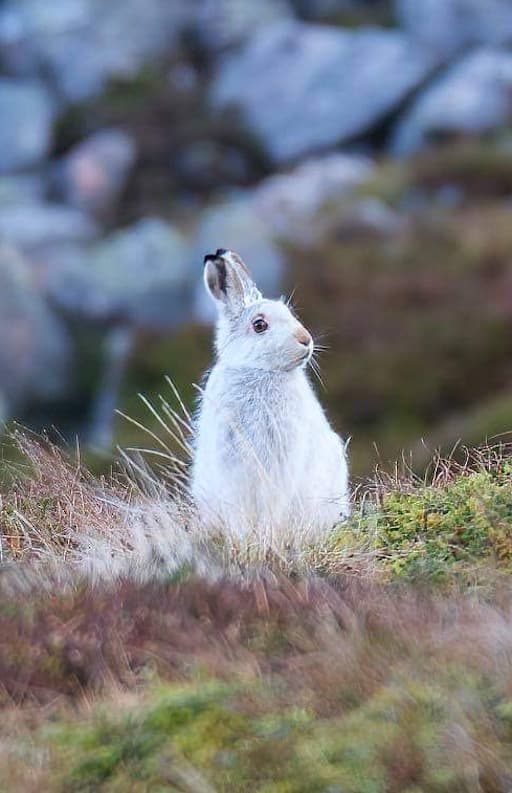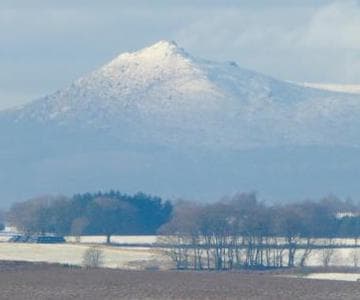Tawny Owls
Tawny owls are our most familiar owl, and Jock loves to hear them calling in winter. The male has the classic owl ‘hoot’, beginning with a drawn ‘hoooo’ followed by a short pause, before a softer ‘hi’ and then a resonant ‘huhuhuhooooo’. The female’s call is a ‘keewik’. A resident pair well often duet.
Have a listen by watching this video.
Hearing the tawny owls calling is always one of the best sounds of winter for Jock. That’s because the adult owls are reinforcing their territories at the beginning of winter, calling often. Young tawnys are reaching maturity and are looking for new homes. Adults tend to stay inside their 12-20 hectares (approximately 45-75 football pitches) territories, which they defend throughout winter.
Tawny owls live about 4 years, and the young birds are chased away from the breeding ground in autumn, having to do their best to survive on their own through the winter. It’s not easy for those young birds as when they call to try to find a mate, they alert the resident adults who will try to chase them out.
What Do Tawny Owls Eat?
Tawnys are brilliant hunters and will take small mammals like woodmice, voles, small birds, frogs, insects, worms and even fish.
About breeding
In courtship feeding from December-February the male brings extra food to his much bigger mate. This is to give them a closer bond and to make sure she’s in good condition for an early start to breeding.
They like to nest in tree cavities or in old crow nests. One clutch of eggs is laid in late winter or early spring.
To find out more about tawny owls visit RSPB Tawny Own web site.
